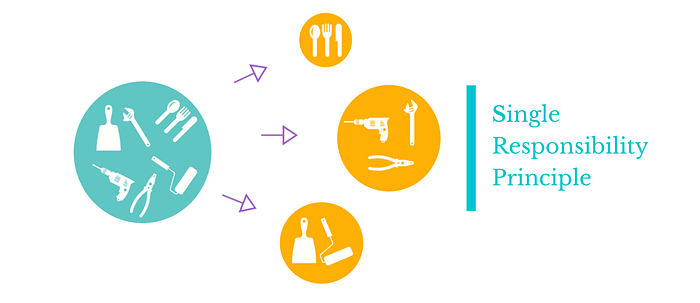🔍📚 Exploring Effective Prop Drilling Solutions🔍📚

Section 1: What does prop drilling mean?
It is a term used in React to describe the process of passing props (properties) from a parent component through intermediate components to reach a child component that needs the prop value. It occurs when a component needs to access data or functionality that is not directly available to it but is available higher up in the component tree.
In a typical React component tree, data flows from parent components to child components through props. For example, consider the following component hierarchy:
App
└── ParentComponent
└── IntermediateComponent
└── ChildComponentIf the ChildComponent needs access to a prop value that is available in the App component but not in the IntermediateComponent or ParentComponent, you would need to pass the prop through all the intermediate components, even if they don't need to use the prop themselves. This passing of props through multiple layers of components is referred to as prop drilling.
Section 2: Reasons and Scenarios for Props Drilling
Prop drilling often occurs due to the following reasons and scenarios:
- Component Hierarchy: Prop drilling happens when components are deeply nested in a component tree, requiring data to be passed from higher-level components to lower-level components through intermediate components.
- Shared Data: Prop drilling is used to pass shared data down the component tree when multiple components need access to the same data or state, such as when a parent component fetches data from an API or manages a shared state that its child components need to consume.
- Contextual Information: Prop drilling becomes necessary when components require access to contextual information like
themes,user authentication status,localization settings, or otherglobal configurations. - Conditional Rendering: In scenarios where conditional rendering is involved, prop drilling may be used to pass down conditional values or flags to determine which components should be rendered or how they should behave.
- Event Handlers: Prop drilling can occur when event handlers or callbacks need to be passed down to child components. For instance, if a button in a deeply nested component triggers an action in a higher-level component, the event handler needs to be drilled through each intermediate component.
Section 3: Best Practices to Minimize Prop Drilling
To minimize the need for prop drilling, follow these best practices:
- Component Composition: Break down complex components into smaller, reusable ones to encapsulate specific functionality.
function ProfileHeader({ user }) {
return (
<div>
<Avatar src={user.avatar} />
<ProfileInfo name={user.name} />
</div>
);
}
function ProfileInfo({ name }) {
return <h2>{name}</h2>;
}- Single Responsibility Principle: Ensure that each component has a single responsibility, making it easier to manage props and reduce the need for drilling.

- Default Props: Set default values for props to provide fallbacks and avoid potential errors.
function Button({ text = 'Click Me' }) {
return <button>{text}</button>;
}- Extract Shared Logic: Extract shared logic into custom hooks or utility functions to avoid duplicating code and passing props unnecessarily.
import React, { useState, useEffect } from 'react';
// Custom hook: useSharedLogic
const useSharedLogic = () => {
const [count, setCount] = useState(0);
useEffect(() => {
// Shared logic: Increment count every second
const interval = setInterval(() => {
setCount((prevCount) => prevCount + 1);
}, 1000);
// Clean-up function
return () => {
clearInterval(interval);
};
}, []);
return count;
};
// component uses the custom hook
const ExampleComponent = () => {
const count = useSharedLogic();
return (
<div>
<h1>Count: {count}</h1>
{/* Other component JSX */}
</div>
);
};
export default ExampleComponent;Section 3: Techniques for Simplifying Prop Drilling
React offers a range of techniques to simplify prop drilling. Here are some powerful solutions:
1.React Context
It allows you to create a context and share data across the component tree without explicitly passing props. It provides a centralized store of data accessible by any component within the context.
const UserContext = React.createContext();
function App() {
const user = { name: 'John Doe', age: 25 };
return (
<UserContext.Provider value={user}>
<Profile />
</UserContext.Provider>
);
}
function Profile() {
return (
<UserContext.Consumer>
{user => (
<div>
<h2>{user.name}</h2>
<h3>{user.age}</h3>
</div>
)}
</UserContext.Consumer>
);
}2. Redux
It is a popular external state management library that eliminates the need for prop drilling. It provides a centralized store for data, and components can access the required data directly from the Redux store using selectors.
import { useSelector } from 'react-redux';
function Profile() {
const user = useSelector(state => state.user);
return (
<div>
<h2>{user.name}</h2>
<h3>{user.age}</h3>
</div>
);
}3. React Hooks
Specifically, the useContext hook allow for easy consumption of context values within functional components. It simplifies the process of accessing shared data and reduces the complexity of prop drilling.
const UserContext = React.createContext();
function Profile() {
const user = React.useContext(UserContext);
return (
<div>
<h2>{user.name}</h2>
<h3>{user.age}</h3>
</div>
);
}4. Higher-Order Components (HOC)
HOCs are functions that take a component as input and return an enhanced version of that component. They can be used to inject props into components without manually passing them through all intermediate components.
function withTheme(Component) {
return function ThemedComponent(props) {
const theme = useTheme();
return <Component {...props} theme={theme} />;
};
}
function Profile({ theme }) {
// Use the theme prop
return <div style={{ background: theme.background }}>Profile Component</div>;
}
const ProfileWithTheme = withTheme(Profile);5. Render Props
It is a pattern where a component accepts a prop that is a function, allowing it to render content provided by the parent component. This technique can help avoid prop drilling by passing data directly to the child component.
function DataProvider({ render }) {
const data = { message: 'Hello, World!' };
return render(data);
}
function DisplayData({ message }) {
return <div>{message}</div>;
}
function App() {
return (
<div>
<DataProvider render={data => <DisplayData {...data} />} />
</div>
);
}Section 4: Context-Specific Solutions and Third-Party Libraries

Depending on your project’s requirements, you may need to consider context-specific solutions or explore third-party libraries like MobX or Zustand that offer alternative state management solutions. Evaluate the trade-offs and choose the approach that best suits your application’s needs.\
Section 5: Key Takeaways

- Prop drilling can introduce complexity and reduce development efficiency in React applications
- Understanding the reasons behind prop drilling and adopting best practices to minimize it.
- Utilizing techniques like React Context, Redux, React Hooks, HOCs, and Render Props, you can significantly simplify prop management and enhance code maintainability.
- Choose the appropriate approach for your project and enjoy a streamlined development process.
- Let’s leverage these techniques and best practices to minimize prop drilling, improve code quality, and deliver exceptional React applications.
By simplifying prop management, we can focus on building valuable features and delivering delightful user experiences.









